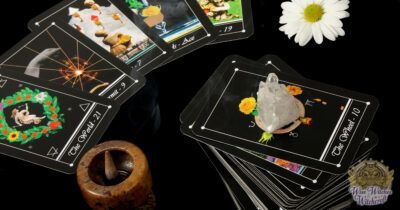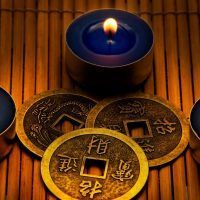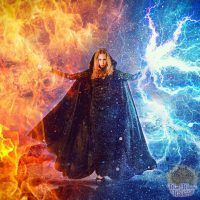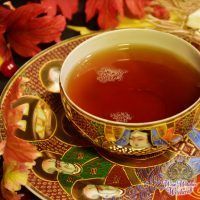Divination: Types and Practices

“Always remember the answers come not from the rock, the teacup, the shell, or the cards. The answers come from you.”
– Gwendolyn Womack
The word divination comes from a Latin word that roughly means foresight inspired by God. On a less lofty sounding note, divination endeavors to answer questions by occult means, magical processes and/or rituals. The diviner has one or more tools they use in determining a querent’s fate. The theory is that the energy of the querent, of the diviner and the Universe itself co-mingle in divination resulting in some form of answer designated by symbolism.
Ancient Origins of Magical Divination
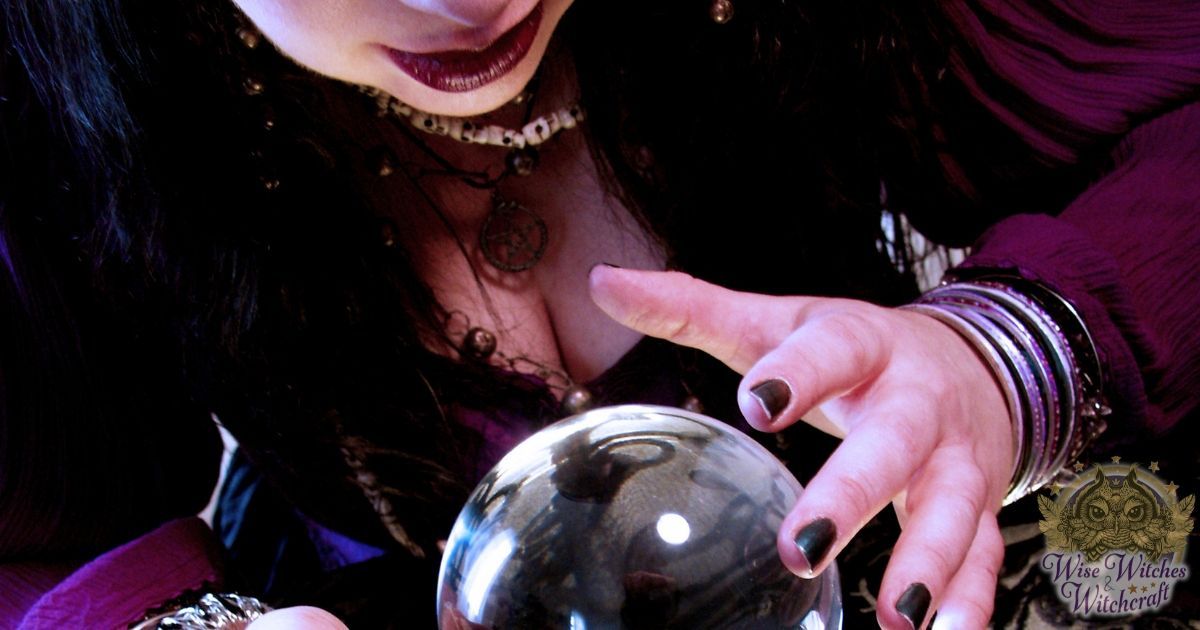
Examples of fortune-telling exist around the world and trace back thousands of years. While some forms of divination began by observing random events (like the movement of birds), others had systematic methods. The ancient Egyptians, for example, divined by scrying with fire, water or oil. They also looked to oracles and dreams for meaningful insights. Scrying was pretty much a tried-and-true fortune-telling method focusing one’s attention on everything from ink on water, polished metals, reflective obsidian and, of course, a crystal ball.
Greek Forms of Divination in Magic
The Greeks were fond of Bibliomancy. They took a work of Homer, opened to a random page and then rolled three dice. The total number on the dice determined the lines that held the answer to that person’s question. Another rather fun method of divination began with an offering to Hermes, the messenger of the Gods. After making the offering along with voicing their question, the person walked into a crowd with their ears covered. Once in the center of say a marketplace they would uncover their ears and pay attention to the first words heard for their answer. Other common forms of Greek divination included:
- Augury: Observing omens & signs for predictions.
- Cleromancy: Divination by lots, such as dice.
- Hydromancy: Divination using water sources like sacred springs.
- Nympholepsy: Fortunes provided with the aid of a Nymph, possessing the diviner.
- Pyromancy: Future predictions based on the behavior of a fire.
Why Seek Out a Diviner?
[wisew_rectangle_large align=”left”]
There were undoubtedly numerous other civilizations and cultures using the Egyptian and Greek methods among others. The foundation of all these efforts is curiosity and personal need. Humans want to feel secure in their future, in their choices, in their partners, etc. A vast majority of questions posed to ancient diviners really hasn’t changed much.
When will I find true love?
Will I be rich?
Should I accept this agreement?
Will we win this war?
Are the signs auspicious to begin this project?
Why is this happening now (and how do I change it)?
Should I place my trust in this person/situation?
What are my biggest obstacles to success?
Yes, some of the wording was different in the past. Rather than asking about a job a person might want to know about their crops or cattle, for example. Even so, there is a continuity to our questions. We want to know our life’s purpose and meaning. Divination gives us a tool for unlocking some of the answers to nagging questions.
Aeromancy: Magical Divination by Air

Aeromancy employs the element of Air for signs and omens. The diviner might watch the movement of clouds, or observe the direction of the wind and its changes. Babylonian priests may have been the first to use this method. The Bible thought Aeromancy was evil, and even Albertus Magnus wasn’t fond of it, considering it a type of necromancy (contacting the dead).
The idea behind Aeromancy is that the Divine, (particularly a God or Goddess associated with the winds and weather), used this element as a way of pointing the way toward a positive outcome or providing simple advice. Various tools helped the Aeromancer like ribbons, bells and weather vanes that moved with changing air currents. Historians believe that this divinatory practice may have provided the roots for the modern practice of Meteorology.
Types of Aeromancy
Austromancy: Observing wind patterns for prognostication.
Capnomancy: Watching the way in which air moves the smoke from a sacred fire.
Ceraunomancy: Observations of thunder and lightning patterns.
Chaomancy: Watching for aerial apparitions.
Eromancy: Persian method of speaking into water (air) and looking for bubbles. This result was auspicious.
Meteormancy: Using the appearance and movement of meteors, comets and shooting stars as omens.
Nephomancy: Observing cloud shapes and patterns for symbolic insights (akin to tea leaf reading).
Aleuromancy: Magical Divination by Paper Fortunes

Aleuromancy begins with various messages written on paper and placed into dough. When a person received a piece of the cooked item (such as a loaf of sweet bread), the message within was their prediction. Fortune cookies are a great, tasty example of this practice.
Alomancy: Magical Divination with Salt

At your next dinner party watch to see if someone spills salt. If it falls toward either person beside them, it’s a very bad sign. This may have started due to the reverence toward salt in various cultures and religions.
Potential Origins for Alomancy
- Salt was an essential part of sacred cakes in Rome.
- Salt tithes and offerings were acceptable in many settings.
- Among the Bedouin (and other cultures), having “salt” between two people was a deep bond. If someone came to the table and turned the salt container over, the bond was broken irrevocably. This symbolism appears in Leonardo da Vinci’s’ Last Supper where Judas appears upending the salt.
- Folkways advise immediately taking a pinch of fallen salt with your right hand and tossing it over your left shoulder to avert any misfortune.
Astragalomancy: Divination with Dice
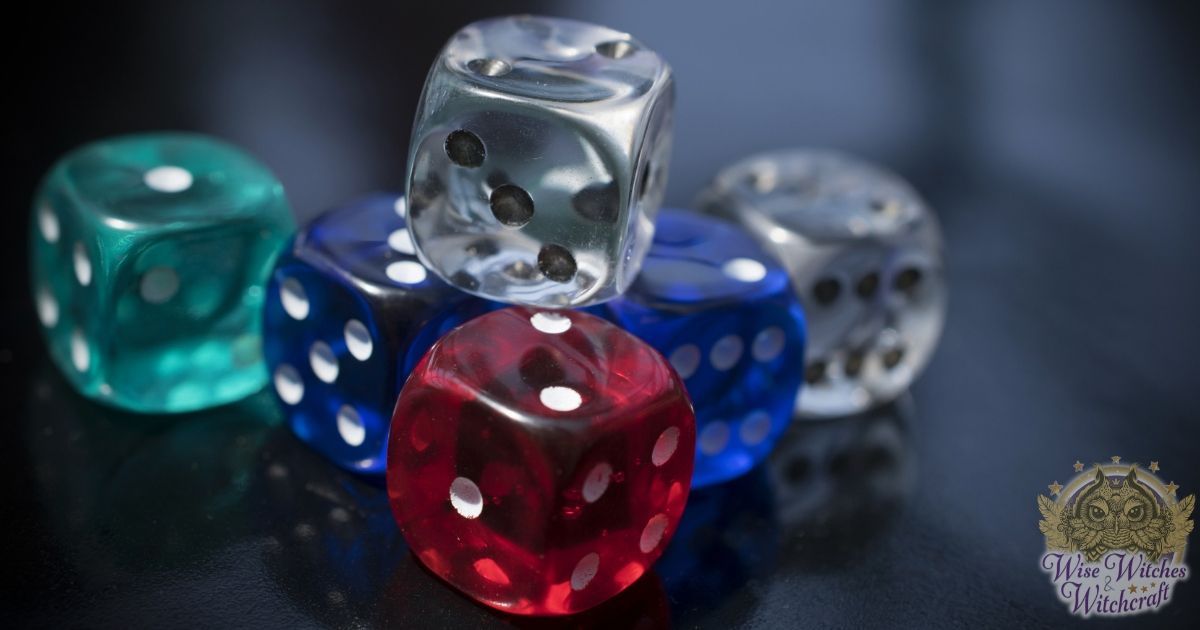
Divination by dice was common in the old world and continues in use modernly. It begins with a circle drawn on paper and placed on the table. The diviner (or the querent) focuses on the question and rolls the dice. If one die lands outside the circle’s circumference, trouble is on the horizon. Two dice outside the circle portend arguments, while all three outside the circle predict good fortune.
Meaning of the Dice inside the Circle
[wisew_rectangle_large align=”right”]Add the dice that stayed within the drawn circle together and use this list for interpreting the result. Alternatively you could use Numerology for the meaning and vibrations behind each number:
Zero-3: Fate is too tangled. Try again later.
4: Trouble between people.
5: Wishes come true.
6. Financial loss.
7. People misrepresenting your actions or intentions.
8. Move slowly. Think things through.
9. A partnership in business or love.
10. A nending of some sort
11. Watch start. Enjoy it.
12. An answer or news (often of a legal nature).
13. Time to change your methods before things get worse.
14. An ally offers much needed assistance – take it.
15. Don’t start anything new this week.
16. Time for a short adventure on the road or by air.
17. Reconsider your outlook and adjust as necessary.
18. All good things coming your way.
Note that tradition has it that you should not use this method for yourself or others more than three times daily. What you want to learn and what you need to know are two very different things.
Bibliomancy: Divination with Books

Bibliomancy employs specially chosen books that contained great truths or insights. Subcategories of Bibliomancy include:
- Rhapsodomancy: Using a book of poetry.
- Stichomancy: Using a book penned by Homer or Virgil.
- Sortes Sanctorum: Using sacred books like the Bible or Qur’an
Applying Bibliomancy
The book you use for bibliomancy works for any book. You can grab one at random from your bookshelf. Place the book on a table balanced on its spine. Let it fall open. Close your eyes and place our finger on one of the pages. Read the passage closest to your finger.
For example, you grab the Wizard of Oz from your collection. You ponder the question of whether you should move forward with a plan. The text near your finger comes from Chapter 2 and reads, “The sky above the City had a Green tint, and the rays of the sun were green.” Green is an active color – i.e., green means GO!
Now because readers often return to books, again and again, they’re likely to open to specific pages decreasing the random nature of this divination method. One answer to that problem is tossing dice, adding them up and going to that page number. Toss the dice again for the line number. Interpret the result.
Cartomancy: Magical Divination with Cards
The art of divination using cards has ties going back to the 14th century in Europe on the heels of playing cards reaching the market. From the 18th through the 20th-century regular playing cards were used for fortunetelling, often being found as part of pastimes for a Victorian lunch party.
A Basic Deck of Cards
The beauty of using everyday card decks is that they are not only readily available but inexpensive. The meaning behind each card varies a bit depending on who presents the information. Generally, however, the face cards represent specific people. For example:
King of Spades: a man with dark eyes and hair. He is over the age of 35, a loner and powerful. Take care, this person knows the art of deceit.
Queen of Spades: An aggressive self-starter over the age of 18. May have foreign roots, dark brown to black hair and dark brown eyes. She is independent and rather aloof.
King of Clubs: also a man with darkish hair and hazel eyes. Typically not married and focused heavily on business.
Queen of Clubs: This businesswoman also enjoys a lot of social activity. She is over 18 with light brown hair and brown eyes.
King of Diamonds: A man with authority, again over 35. He has light hair and blue or gray eyes.
Queen of Diamonds: This woman over the age of 18 has quite a lot of resources, including money. She usually has blond hair and blue or greenish eyes.
King of Hearts: A loving father-figure over the age of 35. He has dark blond hair and brown or hazel eyes.
Queen of Hearts: Over the age of 18, light brown or blue eyes and sandy colored hair. This is the Mother figure that balances the King of Hearts.
The Four Suits
[wisew_rectangle_large align=”right”]Each suit in your deck has a theme behind it. Hearts are the Element of water and symbolize your feelings and situations close to your “heart.” Diamonds are the Earth element and represent work and other common sense matters that take place away from the house. Clubs are the Element of Fire and deliver messages about your finances. Spades are Air and speak of obstacles in your life. Note that the Elemental designation here corresponds to traditional Tarot.
Easy Layouts for Card Divination
If you have a very simple or yes-no type question, pull just one card for a quick response. Two cards may represent choices or partnerships. Look to see how the first influences the 2nd. Three cards symbolize past influences, present circumstances and the future outcome based on the previous two cards.
Other Types of Cartomancy
In reviewing Cartomancy the Tarot is typically the first thing that comes to mind. It’s far more complex than using regular playing cards, having 78 cards, 22 of which are like face cards in an ordinary deck. There are other similarities too including four suits, each with a theme and an elemental correlation. The number of Tarot cards on the market is overwhelming each having a specific focus ranging from an alien or Cat Tarot to ones based on Celtic lore or mythical creatures. By far the “father” of all Tarot decks is the Rider-Waite. This configuration became the cornerstone influencing many decks that came afterward.
Besides the Tarot, there are also Oracle decks. The size of the deck varies depending on the creator. Most are smaller than Tarot decks, the idea being it’s easier to remember card meanings. You may not get quite as detailed a reading from Oracle systems, but they are certainly a valid option.
Cyclomancy: Divination Using Spinning Objects
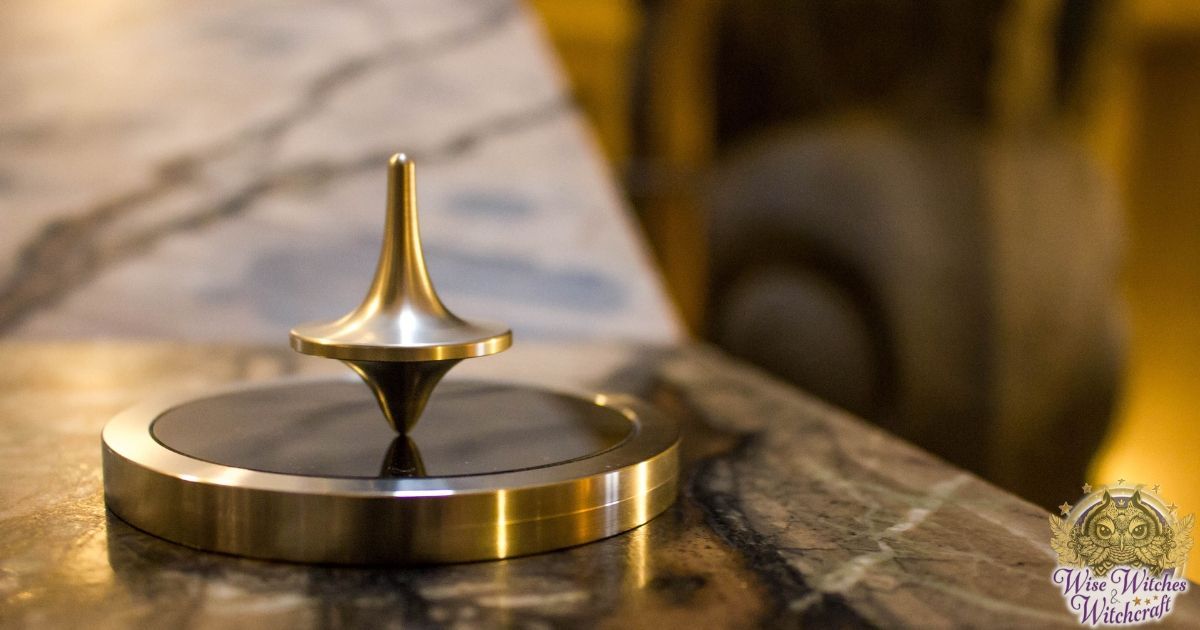
Did you ever play spin the bottle? If so you were participating in a modern version of cyclomancy – divination by the turns of a wheel, top, or bottle revolution. In Greece, there was a surface marked with letters or symbols. When the spun object came to rest, the emblem it points toward portends the future.
Binary Cyclomancy
If you have a yes or no question, pick two items that represent yes (or go) and no (or stop). A black and white stone can do the trick. Place them apart from each other with whatever spinning device you have in the center. Twirl it. Whichever item it stops closest to is your answer (hint: a spinning arrow from board games works very well).
Cyclomancy as Dousing
Another use for Cyclomancy is finding lost items, treasures, mineral deposits or water. For this, you focus on what you hope to unearth and spin. The top of the bottle or arrow points your way. You can stop periodically along your path and spin again to see if you need to make a turn.
Hydromancy: Magical Divination by Water

The Hydromancer observes the surface of a water source for color and motion and uses that for interpretation. Alternatively, a lucky diviner may get the aid of a water spirit such as an Undine who bears a message.
Types of Hydromancy
- Lecanomancy: Interpreting the sounds or water ripples made by dropped or skipping stones.
- Pegomancy: Divination employing the aid of sacred wells, fountains and pools where helpful spirits abide.
- Scrying: A very popular method that entails gazing on the surface of water similarly to how one uses a crystal ball.
I Ching: Divination with Coins
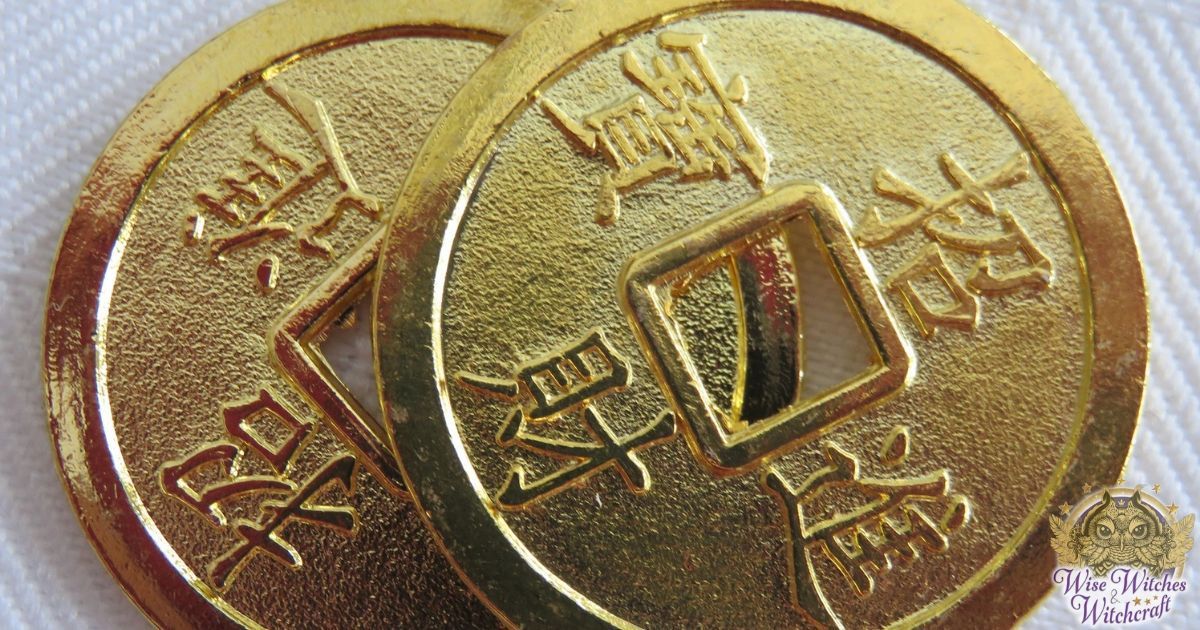
The I Ching arose in ancient China as a means of reading for rulers and nobles. There is historical evidence that the system was in place as early as 2700 BCE. In the early stages the I Ching used yarrow stocks instead of coins. Needless to say, this was a rather messy endeavor. So, using three identical coins became popular. All three coins get tossed six times noting the results (heads and tails). Each of these six results translates into a hexagram.
This is a detailed system that takes time and practice to master. The most popular application for the I Ching is obtaining insights into relationships.
Lithomancy Divination with Crystals and Stones
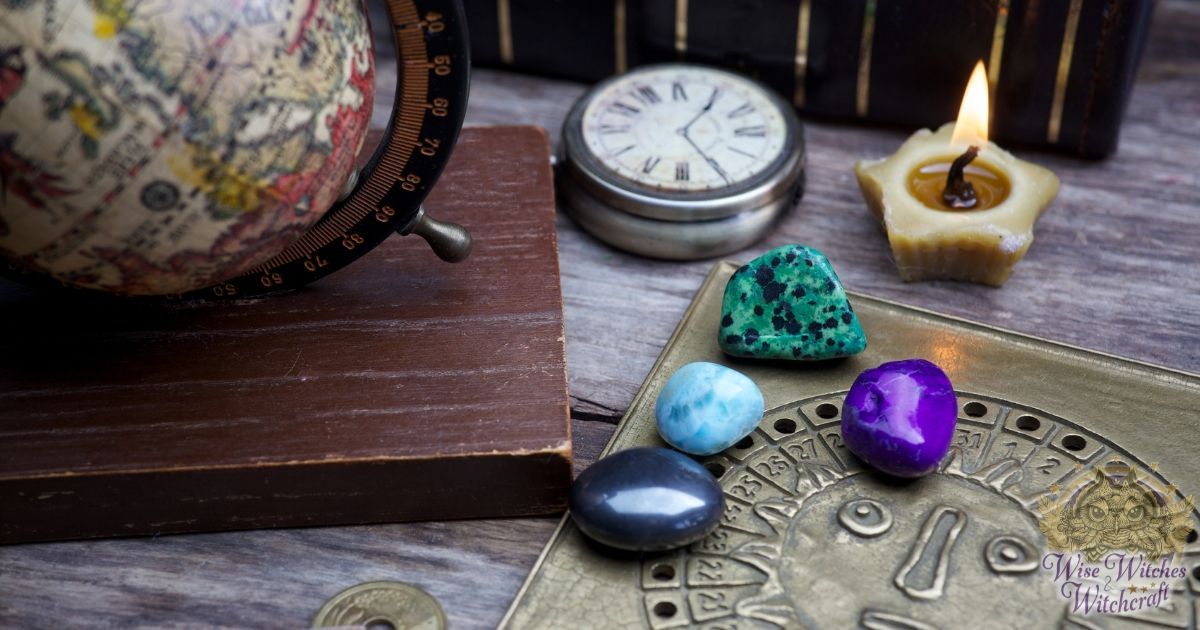
Lithomancy entails a gathering of stones you cast on a surface. A customary Lithomancy Crystal set has thirteen stones (the 13 lunar cycles). Each stone or crystal has a theme. Each diviner can ascribe those meanings from personal insight into the energies of sacred stones. To this foundation the diviner may add a cloth with symbols on it for the moon phases, cardinal directions, seasons, the Zodiac, the “self now” center point and/or the “future” as the edge of the cloth.
Where each stone lands builds a reading integrating not only the area of the cloth near which it landed but also how other stones in that proximity influences that meaning.
Sample Stone Meaning: Amethyst
Say you choose an Amethyst point as one of your stones. Generally, Amethyst represents peace, stabilizing emotions, creativity and spirituality. You cast your stones. Where did the Amethyst land or to what does it point on your cloth?
East: Fears abate; calm returns; renewal.
South: Controlling your desires; separating wants and needs.
West: Monitoring your emotions so they don’t whisk you away.
North: Stress caused by ill-advised actions.
Spring: A fresh start on something you treasure.
Summer: Socialization: Remain aware of how you’re perceived vs. your true self.
Fall: Difficulties: Reach out for sound counsel and assistance.
Winter: Take a break. Go somewhere and be alone with your thoughts so you can process.
Dark Moon: A time for working on your inner shadows and negative thought forms.
Waxing Moon: The time for focusing on your personal or spiritual growth.
Full Moon: What do you most wish would manifest in your life? Work toward that goal.
Waning Moon: Slowing things down to a reasonable pace. Set your own stride.
Other potential symbols for your casting cloth include the planets, topics like love or money, Astrological signs, the Elements, Man-Woman-Child, Dawn-Noon-Dusk-Midnight, etc.
Pendulums: Divination using Dowsing
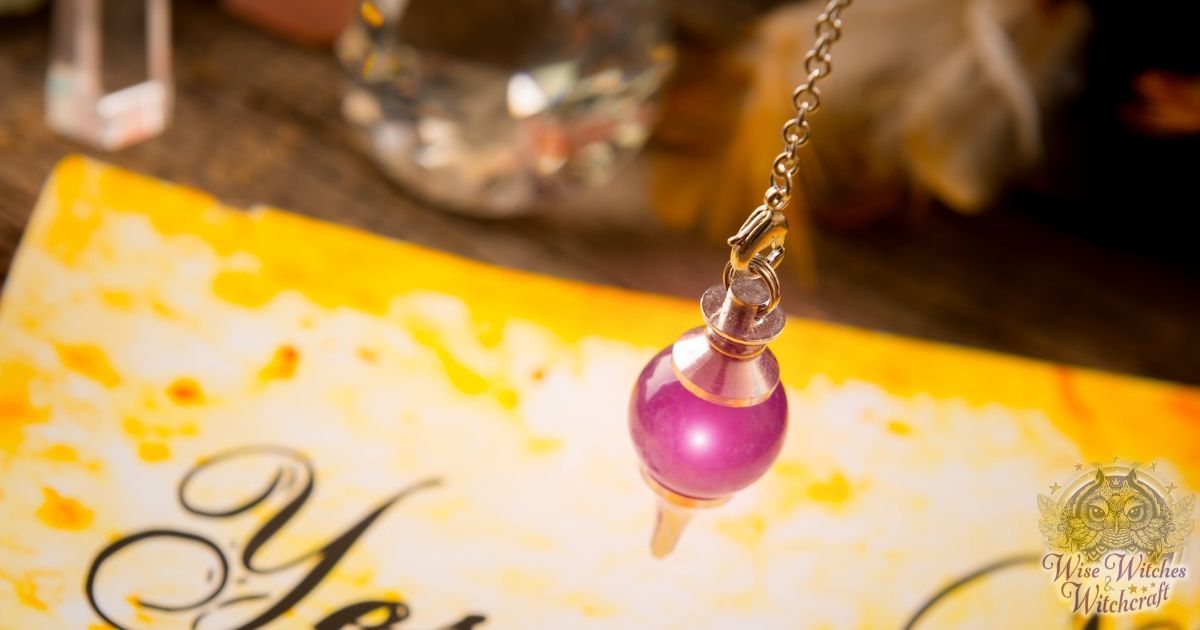
Pendulums can be made from a wide variety of materials attached to a 6-inch cord including crystals, herbs, charms, copper pieces, and weights or bobs. Whatever the choice it shouldn’t weigh much more than an ounce.
Using a Pendulum
Sit at a comfortable table. Rest your elbow on the table so the pendulum swings easily. Designate yes as up and down like a head nodding and no as left to right (circular movements are somewhat neutral).
Still the pendulum and think of a yes or no question for which you know a definite answer already. This is a priming test. If the pendulum gets the answer wrong, you are probably going to have to keep it near you for a while so the two of you sync. If, on the other hand, your pendulum is spot on you can go into different matters where you need answers.
Because of limited movements, a pendulum works best on simple questions. You can increase the meaningfulness of your pendulum by making a round chart for yourself. Portion this like you might a pie with 8-12 slices, each of which you designate with a meaning. Use words like success, happiness, adventure, struggle, love, endings,beginnings, etc. Then as you ask your question, you can observe which part of the pie the pendulum swings toward consistently.
Pyromancy: Divination with Fire
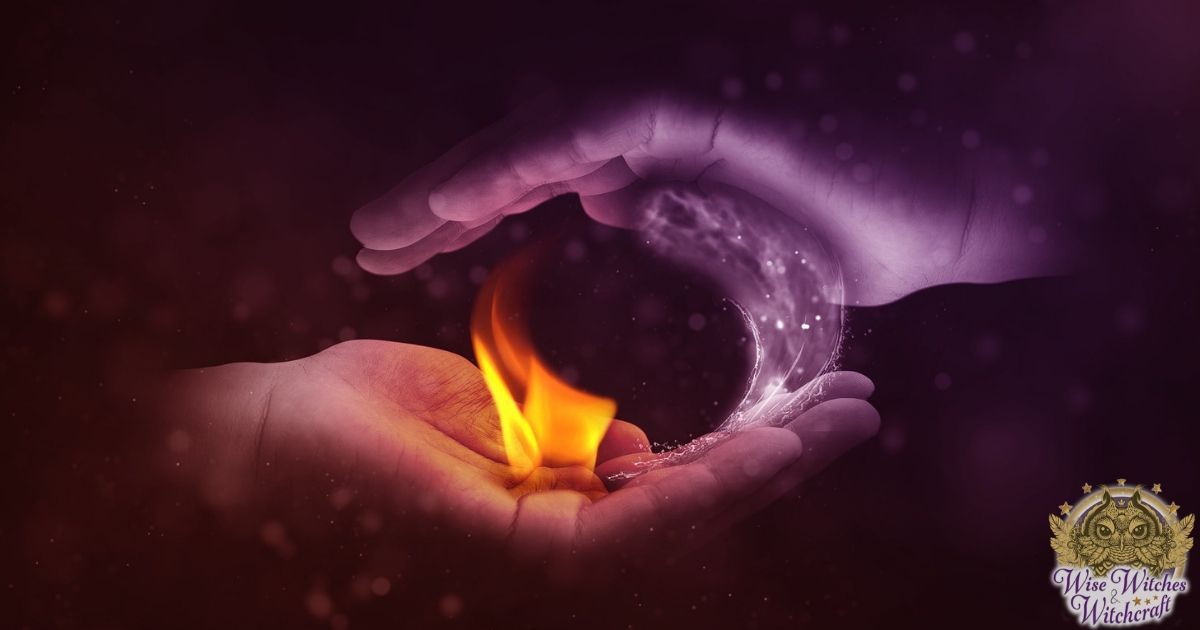
Back in the times when supplicants gave burnt offerings to the Gods, the seers, priests or shamans observed the behavior of the sacred fire. That movement became an augury. How the smoke moved, how it smelled, how bright or dim – all of these indicated whether or not the Gods were pleased.
As time moved forward, other items went into the sacred flames like flowers, herbs, salt, and straw. The reaction in the fire was still observed, but now diviners also listened to the sounds of the fire as if it was a messenger’s voice.
Sub-divisions of Pyromancy
Capnomancy: Observing smoke as it rises from the fire. If it raises straight up, the omen is positive. If it sits like a cloud hovering the flames, the interpretation is negative.
Causimomancy: Observing the way various objects burn in the fire.
Lampadomancy: Interpreting the flames from a lamp or candle. Candles were especially favored for divination. When you light your candle with the future in mind, you can observe it and use these basic interpretations:
- a bright steady flame bears good new of improved fortunes.
- A tiny, flickering flame warns of trouble, so slow down.
- When your wick sparks – good news is on the way.
- Wax dripping on the left means “no” or stop.
- Wax dripping on the right is a “yes” or “go”.
Pyroscopy: Observation of burning paper. Write a question on paper and place it on a fire-safe surface. Light one corner only. If the paper doesn’t completely burn, your answer is no.
Divining with Magical Runes
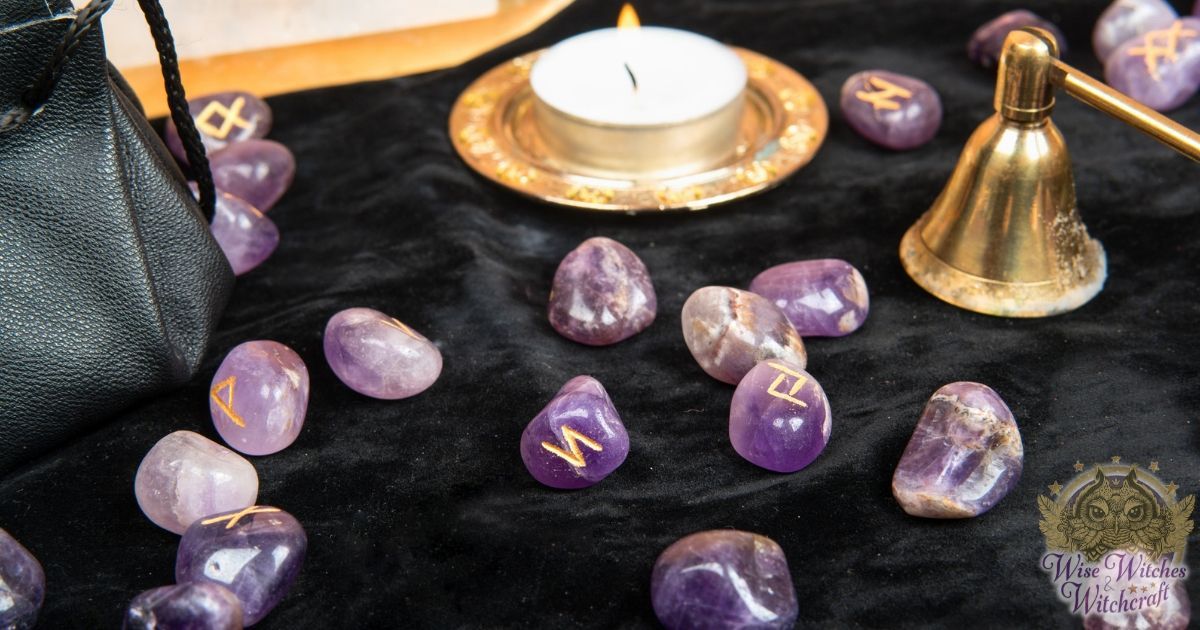
Runes were originally a Germanic writing form before they had a magical implication. When used for that purpose a rune might be carved on a sword hilt, like the warrior rune Teiwaz that also represented the Sacred Divine.
The modern method of using runes for divination is similar to other lot casting systems like stones and the I-Ching. You can pull any number of rune stones. One would be for a simple affirmative or negative reply. Drawing three runes represents the past present and future.
Runes: Meaning and Symbolism
Fehu: This Rune looks a bit like an F pointing upward. It symbolizes good fortune, financial security, hopefulness, fertility.
Reversed: When reversed it is an omen of loss, failure, and bad choices.
Uruz: Appearing like an upside down U, this is the rune of strength and speed. You enjoy good health, feeling bold and liberated.
Reversed: This portends rash actions, others endeavoring to control you and obsessiveness.
Thurisaz: A pyramid on its side with the point to the right, Thurisaz represents your will. Change is coming, and you are ready for it. This also symbolizes male sexuality.
Reversed: you feel wholly exposed, powerless and betrayed.
Ansuz: Appearing like and F pointing downward, this is the rune of communication. Words have power, and now is the time to use yours for the greater good. Reversed: Manipulation is on the move. Someone’s agenda isn’t looking to help you at all.
[wisew_rectangle_large align=”left”]Raido: This rune looks like a capital R. It represents travel. You may move, take a trip, go off to school – but whatever happens, it improves your global perspective.
Reversed: Everything is chaotic. There is no logic or justice.
Kenaz: Resembles a “less than” sign. This rune portends fresh inspiration and knowledge, particularly of a technical nature. You have tons of energy, particularly in the bedroom.
Reversed: a separation. Feeling stuck or blocked. Unfulfilled hopes.
Gebo: A capital X. This “marks the spot” for balance and fairness in relationships and all interactions. This rune cannot be reversed.
Wunjo: Appearing like a capital P, Wunjo brings pleasure, friendship, and general harmony. Just keep all that good energy metered.
Reversed: Feeling stifled, dragged around by negative people, being wholly impractical.
Hagalaz: Looks like an H with the middle line angled downward. This is the rune of things you cannot control, and should not try. Even the hottest of fire makes way for new growth later. This rune cannot be reversed.
Nauthiz: A lower case T with the line in the middle pointed downward to the right. Delays are ahead. You will need to rely on yourself and be patient. Fate is knocking, so look and listen closely.
Reversed: being lazy, needy and menial.
Isa: A straight line. You are about to face a challenge that puts everything on an icy hold. Rather than get frustrated, work on yourself and finding renewed vision.
Reversed: Isa becomes egotistical, sneaky and plotting.
Jera: Image of a “greater” and “lesser” sign interlocked. You finally get to reap the rewards of your hard work. Now is the time of real breakthroughs where hopes manifest. This cannot be reversed.
Eihwaz: A single line with a small branch at the top moving down to the right, and another on the left moving upward. You have found people who are reliable, trustworthy and motivated to help you with your goal.
Reversed: Nothing seems to go the way you hope. Exasperation.
Perthro: Appearing like a line with two arrowheads attached on the right side. One at the top points down, and the one on the bottom points up. This is the run of mystery. It whispers of magic and the occult, of divination and meeting destiny. The Sacred Feminine.
Reversed: You feel wholly alone and unmotivated.
Algiz: Somewhat like a peace sign where the Y part has slid to the top of the image. Seek shelter for yourself and your loved ones. Move out of the spotlight. Listen to your gut instincts.
Reversed: An unseen danger and a warning from the Gods.
Sowilo: A geometrically styled S. This is the rune of success and honor wholly earned. You are on fire and making positive changes.
Reversed: Loss. Investing yourself in a bad proposition. Foolishness.
Tiwaz: An upward pointing arrow representing the warrior. This is the protector willing to give of themselves to safeguard the sacred. In legal matters, success is around the corner.
Reversed: Brain freeze, failure, lacking passion, people misunderstanding your intent.
Berkano: A capital B. Birth of a literal or figurative nature. Mental keenness, feeling liberated and awakened in new ways. Love.
Reversed: Problems on the home front and worries. Someone is lying.
Ehwaz: Appearing like a capital M, Ehwaz talks about movement. Developments are progressing very well thanks to teamwork. Your relationships at home find harmony.
Reversed: A sense that something is missing or “off.” Unconfirmed mistrust.
Mannaz: Another capital M except that the interior lines make an X. This speaks of how you see others, and how they see you. Be aware of that and make sure you say what you mean. Cooperate.
Reversed: Illusion, deception, oversights with no help to be found.
Laguz: A line with a short twig at the top pointing down and to the right. This is the rune for water, healing, and rejuvenation. Your psychic self pours out into your dreams. Pay attention!
Reversed: Nothing makes sense. You keep making bad choices and find yourself stuck.
Ingwaz: This rune looks like a perfect diamond. It symbolizes the Sacred Masculine, virility, honor, ethics, your “tribe” and genuine caring. Take some down time with your family. This rune cannot be reversed.
Dagaz: Drawn like two triangles connected at their points. This rune is daybreak. You are awake and have a clear head. Get planning for those things that make you truly happy leaving unnecessary baggage behind you.
Reversed: Endings. The inability to see what’s in front of you. Despair.
Othala: Take Ingwaz and add legs that extend on the left and right of the diamond. This rune speaks to us of our Ancestors and tradition. It may be time for a pilgrimage of sorts back to your roots.
Reversed: Karmic bounce-back resulting in subjugation, financial hardships, and bigotry.
Scrying: Divination by Gazing
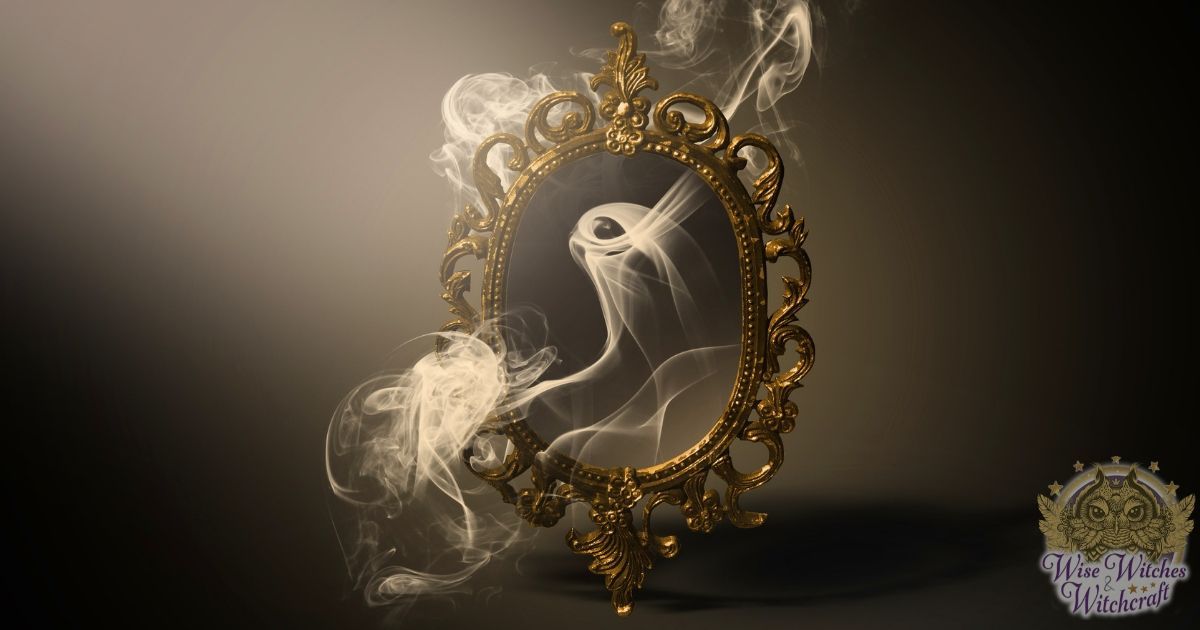
In its simplest form, Scrying is a means of receiving visions from a specific media like a magic mirror or polished crystal. Traditional mystery schools hold this method in high regard. Even Nostradamus scryed using a bowl of water.
To scry, one gazes at a surface and relaxes. Vision may blur slightly, and the diviner moves into a light trance. In this state, access to the higher self, spirits, and teachers opens. This is the point where images start appearing in the media. They may begin as wisps of colors that spin and twist eventually making images of a symbolic or literal form.
Bear in mind that, as with any spiritual practice, it takes time to receive detailed images. You have to train yourself to lock out the world around and focus only on your divinatory tool. You cannot force this process, and many times nothing happens for novices. That may be frustrating but keep at it. Eventually, you will have some level of success:
Scrying Media
There are many common things that seers have used for eons in the hopes of producing visions. These include:
- Cloud Scrying
- Crystal or Crystal Ball gazing
- Fire Scrying
- Ink Scrying
- Lamp Scrying
- Oil Scrying
- Mirror Scrying
- Smoke Scrying
- Water Scrying
Realistically anything you can observe single-mindedly for at least 20 minutes can become an effective scrying tool.
Spirit Boards and Talking Boards
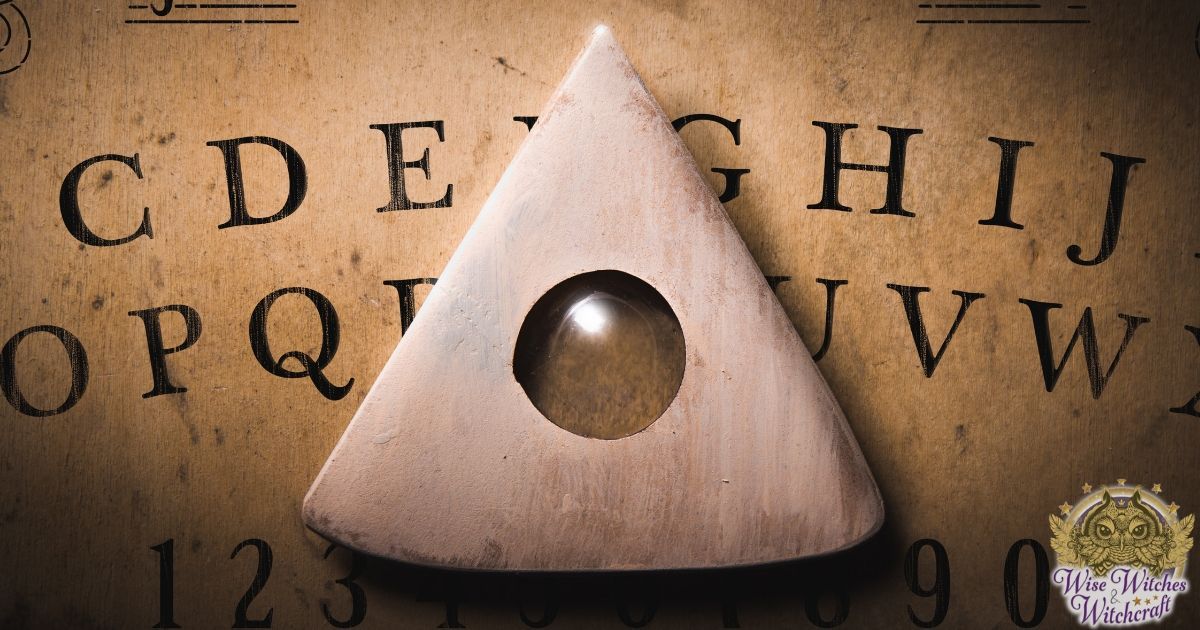
Numerous cultures had some version of what we now call the Ouija. The idea behind talking boards is very similar to that of automatic writing, but in this case, you’re using a planchette. The Spirit Board has its designation because people believed it could open the door to various Spirits, or even house an entity who would communicate information from the “other side.”
The Ouija came about in the late 1800’s when the interest in spiritualism was at an all-time high. The developers weren’t really involved in spiritualism. They were just smart businessmen. So it was that Ouija boards started popping up everywhere from summer camp and picnics to High Tea gatherings.
Most people practicing some form of metaphysics issue caution with Spirit Boards, particularly a familial one. Unless you know what you’re doing, a door can open that you do not know how to shut. Also, just because someone is dead doesn’t mean they’re any wiser than they were in life! And because of the set up of the board, it’s relatively easy for some well-intended soul to manipulate answers.
Tasseography: Divination by Tea Leaves
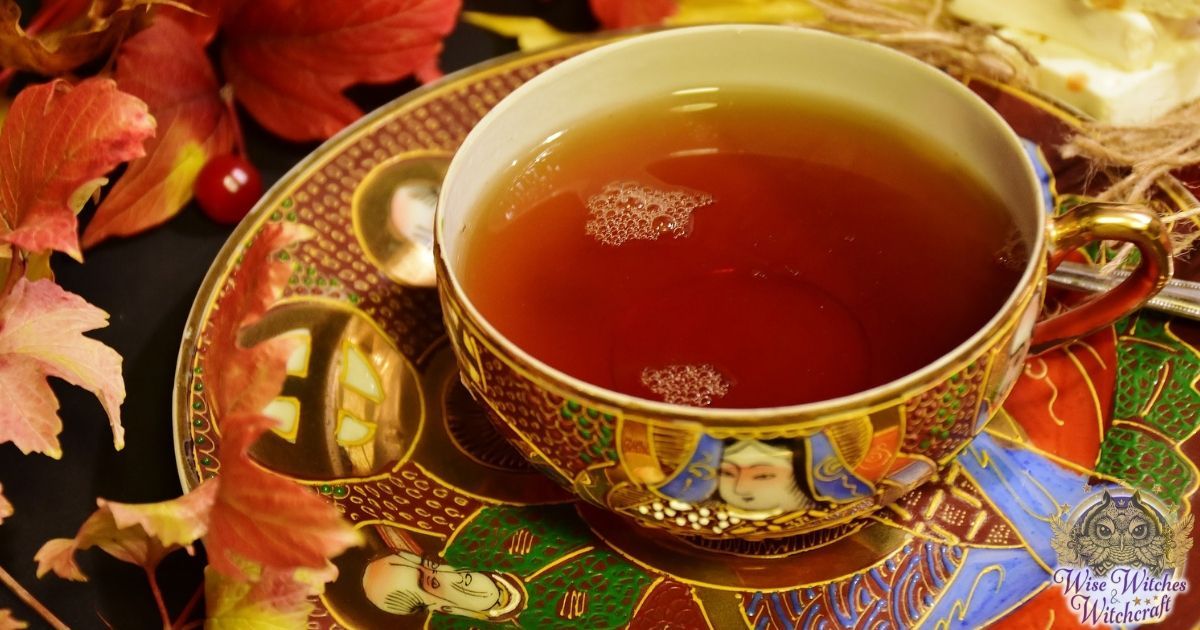
Tea leaf reading begins with a cup of tea made with loose leaves. The person enjoying the tea ponders a question while sipping happily. When there is but a little liquid left, the tea leaf reader up-ends the cup and gives it a light tap. When turned upright again, the patterns made by remaining leaves stuck in the cup are ready for interpretation.
There are all manner of shapes from hearts and crosses to rings and snakes. In some ways, this is like a “find the hidden item” games. A vivid imagination and aptitude for visualization go a long way.
Generally speaking, the leaves at the top of the cup represent the here and now. The ones at the bottom predict the future. Tasseography is so popular that special cups were made for the fortunetellers use.
Types of Tea Leaf Reading Cups
Lovely tea leaf reading cups depict various images on the inside that assist with interpretation.
Zodiac Cups: These housed planetary symbols and Astrological signs. There was no tried-and-true pattern, which actually made them even more whimsical. The variations appealed to the varying personalities of the readers even as specific Tarot decks do.
Playing Card Cup: The interior of this cup (and sometimes the saucer) has images of a standard deck of cards – 52 altogether and a joker just to keep things interesting. In this case, the interpretation for each card resembles those for cartomancy.
Symbol Cups: Think of this cup like a cue card for spiritualists. The cup typically contained anywhere from a dozen to fifty emblems that were easily recognized and understood. Example symbols include a horseshoe, ladder, the sun, a lightning bolt, a goblet, a star, and a heart.
Coffee Divination: For our coffee lovers, don’t despair. There are ways to scry in your coffee too. Depending on the type of coffee, you can swirl any sediments in your cup and observe them just like tea leaves. This approach comes from Romania and Turkey.
An alternative is taking a rich cream and pouring a bit on the surface of your coffee while pondering your question. Watch for the pictures created by the creamer against the dark background.
Water Witching: Divination by Dowsing
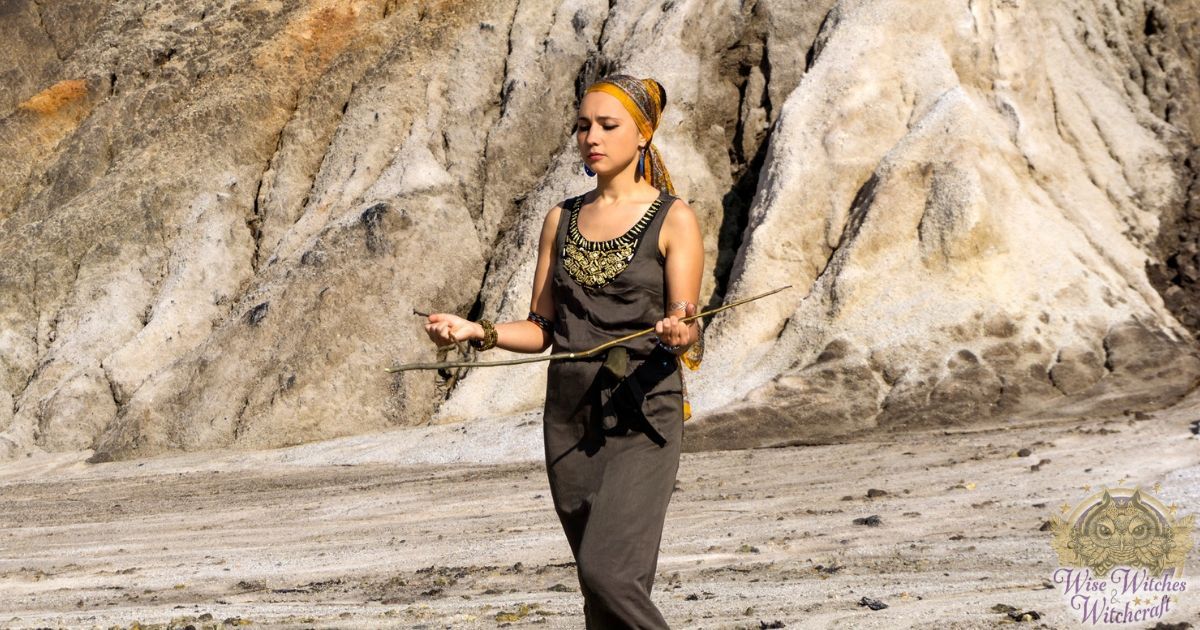
Dowsing rods are used for a variety of purposes whether it is locating gems and graves sites, treasure, or water. Water witching, as the name implies, is the latter. The practice begins with a Y shaped branch, often hazel or willow. The diviner holds the stick with both hands, parallel to the ground. When the stick dips downward, that’s the place to start looking.
Dowsing in History
While there is little doubt that dowsing existed in a variety of ancient settings the best documentation we have for Water Witching begins in mid-1500. Once interest increased, minors might use a dowsing rod for discerning mineral deposit locations. Early Americans turned to the rods for locating water for a needy convent.
How Does Water Witching Work?
There is a great deal of discussion among dowsers as to whether it’s the rod or the user that truly detects water (or a combination of both). Many dowsers come from family lines and believe they inherited the gift from their ancestors.
Effectively the dowser taps into energy that most people simply do not perceive. The Dowsing rod is, therefore, a focus more so than the tool that makes Water Witching work. Some compare it to “tuning into” a specific radio frequency – the one that has the information you need. In this case, the Dowser tunes into water, or metals or lost items (just to name a few).
Zoomancy: Divination by Observing Animals

Most people know the folklore that tells us a black cat crossing our path portends bad luck. This is an example of Zoomancy, in this case, Ailuromancy to be precise. Other cat omens include when it curls up with forehead on the ground, a storm is coming. If a stray cat follows you home and you give it treats it encourages a windfall.
Other types of Zoomancy include:
- Entromancy: Observing the behavior of insects.
- Arachnomancy: Divination by watching spiders.
- Apantomancy: Omens determined by random animal encounters.
- Myomancy: Interpreting the movements of mice and rats.
- Ophiomancy Portends based on snake behavior.
- Ornithomancy: Noting the movement of birds, their flight patterns, songs, colors, and numbers (this was very popular in Rome).
While these ideas may seem odd, Zoomancy has a long and interesting history. Etruscans studied pecking hens, Babylonians splashed sleeping oxen with water and recorded the reaction, Polynesians traced the markings of a beetle over a murdered person’s grave (to determine the culprit), and in China, there are earthquake checkpoints with select animals that are observed for predictive purposes.
You can learn more about Animal meanings and symbols at our sister site: WhatisMySpiritAnimal.com.

